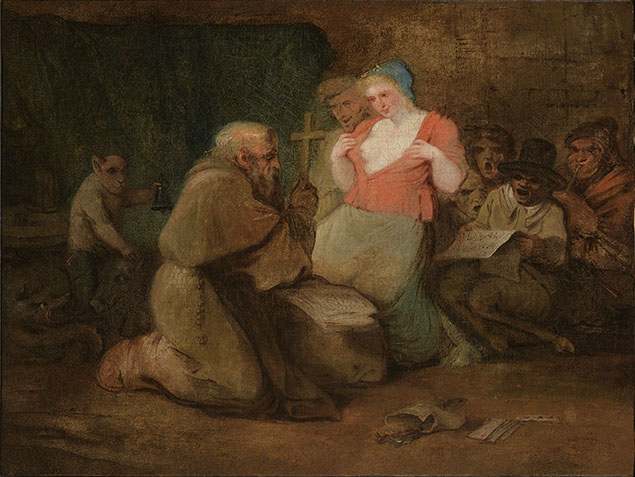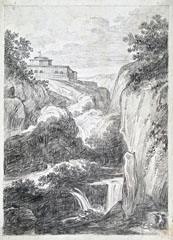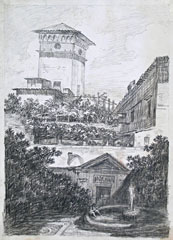(San Sebastiano Curone 1758 - Rome 1823)
THE TEMPTATION OF ST. ANTHONY THE ABBOT, Late 18th
Oil on canvas, 45 x 59 cm.
Our unpublished painting depicts the same subject of another oil painting by Giani, published by Anna Ottani Cavina.
See Anna Ottani Cavina, Felice Giani (1758-1823) e la cultura di fine secolo, December 1999; cat. D3, and volume 2, p.638, fig. 898.
See here a comparison between the two works.
The published work, also unsigned, is smaller in format and in a more sketchily painted. It also lacks details that appear in our painting, such as the playing cards and the bag of coins in the foreground.
Ottani Cavina connected the published work to a famous drawing by Giani preserved at the Uffizi, which shares its themes, and which she dates within the 18th century, Il Negromante.
We believe our version predates the published painting. In fact, it has a more pictorial, less sketchily character, which brings it closer to works such as Giani's Samson betrayed by Dalida (1783) at the Accademia di Belle Arti in Parma.
See here another detail of the central figures in our painting
Anna Ottani Cavina identified the 17th-century Dutch sources for the subject: the numerous Temptations of Saint Anthony painted by David Teniers the Younger. See here the versions in Dresden and in Berlin, possibly destroyed in 1945.
REDUCED PRICE
previous price was € 17000
Born near Genoa, Giani was trained first in Pavia then in Bologna, where he studied with Domenico Pedrini and Ubaldo Gandolfi. In 1780 he moved to Rome, studying with Pompeo Batoni, Giuseppe Antolini and Christoph Unterberger at the Accademia di San Luca and beginning his independent career as a fresco painter. He absorbed influences ranging from ancient Greek and Roman art to Michelangelo's and Raphael's Renaissance classicism and the Romantic classicism of contemporaries such as Johann Heinrich Fuseli. Between 1784 and 1794 he lived in Bologna and Faenza, executing decorative commissions. In 1803 he was summoned to Paris. Until the fall of Napoleon, Giani divided his time between Paris and Italy; then he successfully survived the political changes and continued to execute decorative schemes in Rome. Giani worked in a distinctive Neo-classical style, creating sumptuous, richly coloured rooms, the paintings on walls and ceilings being surrounded with a wealth of antique ornament. He was a prodigiously talented draughtsman, who drew constantly, both out of doors and in the studio.


